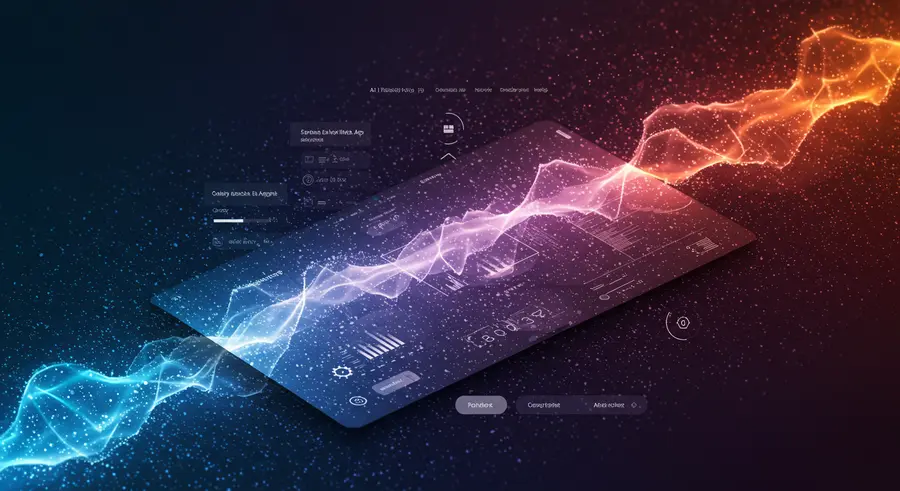Appearance

Welcome, tech innovators and web enthusiasts! 👋 Today, we're diving into a groundbreaking synergy that's set to redefine our digital interactions: the integration of Artificial Intelligence (AI) into Progressive Web Apps (PWAs). If you've been following the evolution of web technologies, you'll know that PWAs already offer an incredible app-like experience directly from the browser. But what happens when we infuse them with the intelligence of AI? A new era of smarter, more responsive, and incredibly personalized web applications emerges!
For a foundational understanding of PWAs, check out our Deep Dive into Progressive Web Apps article.
Why AI and PWAs Are the Perfect Pair 🤝
PWAs are designed to be reliable, fast, and engaging, bridging the gap between traditional websites and native mobile applications. They offer offline capabilities, push notifications, and the ability to be installed on a user's home screen. Adding AI capabilities takes these benefits to a whole new level:
- Hyper-Personalization: AI can analyze user behavior, preferences, and context to deliver tailored content, recommendations, and interfaces, making every user's experience unique.
- Enhanced Engagement: From intelligent chatbots to predictive assistance, AI keeps users engaged by anticipating their needs and offering proactive solutions.
- Smarter Offline Experiences: Beyond just caching, AI can enable predictive caching, understanding what content a user might need next even when offline.
- Data-Driven Insights: AI helps process vast amounts of user data within the PWA, providing invaluable insights for continuous improvement and feature development.
- Accessibility & Inclusivity: AI can power features like real-time language translation, speech-to-text, and image descriptions, making PWAs more accessible to a wider audience.
Practical AI Implementations in PWAs 🧠✨
The possibilities are vast, but let's explore some tangible ways AI is being integrated into PWAs:
1. Personalized Content & Recommendations
Imagine an e-commerce PWA that learns your style preferences and recommends outfits based on your past purchases and even the weather in your location. Or a news PWA that curates articles specifically for your interests. AI algorithms can analyze browsing history, click-through rates, and even sentiment to deliver highly relevant content.
- Example: A PWA for a streaming service could use AI to recommend movies or shows based on your viewing habits and implicit feedback.
2. Intelligent Chatbots & Virtual Assistants
Integrating AI-powered chatbots directly into a PWA enhances customer support, guides users through complex processes, or acts as a personal assistant. These bots can understand natural language, learn from interactions, and provide instant, accurate responses, improving user satisfaction.
- Example: A PWA for a banking service could feature an AI chatbot to help users with balance inquiries, transaction history, or even complex financial advice.
3. Smart Offline & Predictive Capabilities
PWAs excel at offline functionality, but AI can make it smarter. Instead of just caching visited pages, AI can predict which pages or content a user might access next and pre-cache them, ensuring a seamless experience even in low-connectivity environments.
- Example: A travel PWA could use AI to pre-load maps and attraction information for a user's upcoming trip, even if they haven't explicitly opened those sections yet.
4. Enhanced Search & Discovery
AI can revolutionize the search experience within PWAs, moving beyond keyword matching to understanding user intent. This leads to more accurate search results and a more intuitive discovery of features or content.
- Example: A PWA for a recipe platform could allow users to search for "quick weeknight meals with chicken and broccoli" and get relevant, tailored suggestions.
5. On-Device AI for Privacy & Performance
A significant trend is running AI models directly on the user's device within the PWA. This leverages technologies like WebAssembly (Wasm) and emerging Web Neural Network API (WebNN) to perform computations client-side. This approach offers:
Improved Privacy: User data doesn't leave the device for processing.
Reduced Latency: Faster responses as there's no network roundtrip.
Offline AI: AI functionalities remain available even without an internet connection.
Example: An image editing PWA could use on-device AI to apply filters or enhance photos without uploading them to a server.
Real-World Glimpses 🌐
While many AI-PWA integrations are subtle, some examples showcase the potential:
- Redmenta: This AI-powered platform helps teachers and students create personalized learning paths and track progress, accessible as a PWA.
- TheTechBrain AI: A SaaS company that leveraged PWAs for seamless desktop and mobile accessibility for its AI-driven services.
The Future is Smart & Progressive 🔮
The convergence of AI and PWAs is not just a passing trend; it's a fundamental shift towards more intelligent, adaptive, and user-centric web applications. As AI models become more efficient and browser APIs expand, we can expect to see even more sophisticated AI capabilities directly within our PWAs. This promises a web that is not only accessible anywhere but also anticipates our needs, learns from our interactions, and offers truly personalized digital experiences.
Embrace the intelligent web – the future of PWAs is here!